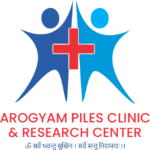Before diving into exploring the most effective treatment options for pilonidal sinus, it is crucial to gain a comprehensive understanding of this condition. Pilonidal sinus, also referred to as a boil, typically develops in the natal cleft near the tailbone, resulting in the discharge of pus, often mixed with blood. This area may become filled with debris and hair, leading to a foul-smelling discharge. Those afflicted by this condition commonly experience symptoms such as pain, discomfort, and swelling. The initial manifestation of pilonidal sinus typically presents as a swelling or a lump, commonly known as a pilonidal cyst, which subsequently progresses to the development of a pilonidal sinus.
Pilonidal sinus prone population and common causes:
Pilonidal sinus, tends to affect a specific population group. This condition is observed more frequently in young males belonging to the age range of 15 to 35 years. The development of pilonidal sinus can be attributed to several factors. These factors include the presence of thick and coarse hair in the back region, being overweight, leading a sedentary lifestyle, extended periods of sitting on hard surfaces, hormonal changes, tight clothing that may contribute to friction, and inadequate hygiene practices in the affected area.
Among these potential causes, the type of hair individuals have can play a significant role in the formation of pilonidal sinus. Thick and coarse hair in the sacral region can predispose individuals to this condition, potentially leading to the development of sinus tracts and abscesses. Furthermore, lifestyle factors such as being overweight or maintaining a predominantly sedentary routine can exacerbate the risk of pilonidal sinus. People who spend prolonged periods sitting on hard surfaces may experience increased pressure on the tailbone area, which could contribute to the development or worsening of this condition.
Hormonal changes, typical in the age bracket where pilonidal sinus is most common, can also influence the susceptibility to this condition. Additionally, wearing tight clothing that rubs against the affected area could further irritate the skin, potentially triggering the formation of pilonidal sinus. Moreover, inadequate hygiene practices, especially in regions prone to sweating, could create an environment conducive to infection and inflammation, thus increasing the likelihood of developing or worsening pilonidal sinus.
What you expect during visit to doctor?
When seeking consultation for your pilonidal sinus from a specialist doctor, it is common for the doctor to ask routine questions related to the disease’s onset, symptoms, and any previous treatments you may have tried. Following these inquiries, the doctor will typically proceed with a localized examination to assess the area affected. In some cases, to confirm the diagnosis and get a clearer picture of the condition, a specialist might request a magnetic resonance imaging (MRI) scan to provide detailed images of the region. This imaging procedure can be crucial in accurately diagnosing and understanding the extent of the pilonidal sinus, allowing the doctor to tailor the treatment plan accordingly to address your specific needs. Moreover, the MRI results can assist the doctor in determining the most suitable course of action, which may include recommendations for conservative management, such as topical treatments and hygiene measures, or surgical intervention, depending on the severity and complexity of the condition. By following the doctor’s recommendations and undergoing the necessary diagnostic tests, you can collaborate effectively with the specialist to manage your pilonidal sinus in the most informed and individualized manner, ensuring the best possible outcome and long-term health of the affected area.
What is the best treatment for pilonidal sinus in India?
Various treatment options are available for pilonidal sinus, such as excision of the sinus, advanced flap procedures, and the increasingly popular LASER treatment. However, all these treatments share a common issue – a high rate of recurrence. In India, a centuries-old treatment known as kshar sutra has emerged as the best solution for pilonidal sinus due to its exceptional success rate and minimal complications. This minimally invasive procedure can be conducted on an outpatient basis, allowing patients to leave immediately after the treatment without requiring bed rest, daily dressings, or antibiotics. Patients only need to follow up once a week for the kshar sutra to be changed until the pilonidal sinus is completely healed.
Best kshar sutra treatment provider in Chandigarh, India:
When it comes to seeking the finest Kshar sutra treatment in India, Arogyam Piles Clinic and Research Center situated in Mohali, Chandigarh undoubtedly stands out as a top choice. This renowned clinic is headed by a dedicated team of highly experienced Ayurvedic specialist doctors, led by Dr. Vinay and Dr. Anupam, who have achieved remarkable success in treating numerous patients suffering from pilonidal sinus. Arogyam Piles Clinic is widely recognized for its advanced Kshar sutra treatments, including IFTAK, BKST, and DKST techniques, known for their effectiveness in facilitating early recovery and providing lasting relief to patients. Booking an appointment with Arogyam Piles Clinic is made convenient for patients, whether through their official website, www.arogyampilesclinic.com, or by directly contacting them via phone at +91 96467 64444. Choose Arogyam Piles Clinic for expert care and innovative treatments that prioritize your health and well-being.



